Tuesday Triage #50
- TUESDAY TRIAGE #50 by Vadim Drobinin
- On new milestones
- On writing style
- Milk and Honey
- Rhubarb crumble tartlet
- Butternut squash tortellini with sage brown butter
- Things I enjoyed reading
- 1. At This Instagram Hot Spot, All the World’s a Stage (and the Buffalo’s a Prop) by Vivian Wang
- 2. Maps of Matter by @michael_nielsen
- 3. Trish Rothgeb coined ‘third wave’ — and is now looking toward coffee’s future by Michael Paul Light
- 4. What if an AI won the Nobel prize for medicine?
- 5. Welcome to the Golden Age of Masa by @theglutster
- 6. Engineers: You Can Disrupt Climate Change by David Fork and Ross Koningstein
- 7. This Simple Test Reveals if Your Mental Images Are More Vivid Than Other People's by Reshanne Reeder
- 8. We Moderns Are Status-Drunk by Robin Hanson
- 9. Doing old things better vs doing brand new things by @cdixon
- 10. Building telemetry for tea aka Tealemetry by @benjojo12
- Things I didn't know last Tuesday
- 1. Ladybug larvae
- 2. 86 (term)
- 3. Sunshower
- 4. American men lose friends faster than women
- 5. Military chocolate
- 6. Some banknotes' size correspond to their value
- 7. Lollipop lady
- 8. Duenos inscription
- 9. People are more likely to get hired if they wear glasses to the interview
- 10. Sonoluminescence
- Book of the week
- Thank you and see you in a week!
TUESDAY TRIAGE #50
by Vadim Drobinin ¶
Your weekly crème de la crème of the Internet is here!
29.06.2021 (read in browser)
On new milestones ¶
This week's edition marks fifty newsletters I've sent out over the last year.
Some people might notice that the one year anniversary happens in a few weeks, and rightfully so! Alas, as humans we find comfort in round numbers and now is not the place or time to change it.
Over this year, something started as a way to nudge my wife to read links I send her over a week, turned into 400+ subscribers, 50% retained followers, 6300+ emails, 33000+ unique page views, and more than 500 reviewed articles and at least 500 things I have learnt so far.
Thanks for staying tuned, and I can't blame those who might share the link to this edition (or any other for that matter).
On writing style ¶
I've been writing for years now, and one of the things I wish I learnt sooner rather than later is about one's personal style.
My teachers were great at explaining how to copy one's favourite writers but I struggled with this as a concept for a while, afraid of loosing my author's identity.
I didn't have one back then though. Or at least I haven't found it yet.
If I could give an advice to my past self, I would urge to try out their suggestion straightaway.
And then listen for friction and resistence.
These friction and resistence would be glimpses of my own style, right ahead.
On a completely separate note, I've tackled on a few more recipes from restaurants with Michelin stars.
Milk and Honey ¶
One of the best dishes I tried out of Daniel Humm's tasting menu.
Features frozen honey spheres hidden inside milk sorbet, garnished with bee pollen and milk brittle.
A few things to consider: honey doesn't really freeze with non-commercial freezers. Daniel is using liquid nitrogen but I am too lazy to walk with a Dewar flask across the city, so had to dilute it a bit and throw in some dirty magic (read: emulsifiers). Also milk sorbet is different from ice cream as it almost lacks fat. The taste is more pure, but it freezes and melts faster.

Milk brittle is simply dehydrated foam of milk and glucose. It turns into an ugly mess overnight, if not stored in an air-tight container, so don't repeat my mistakes.
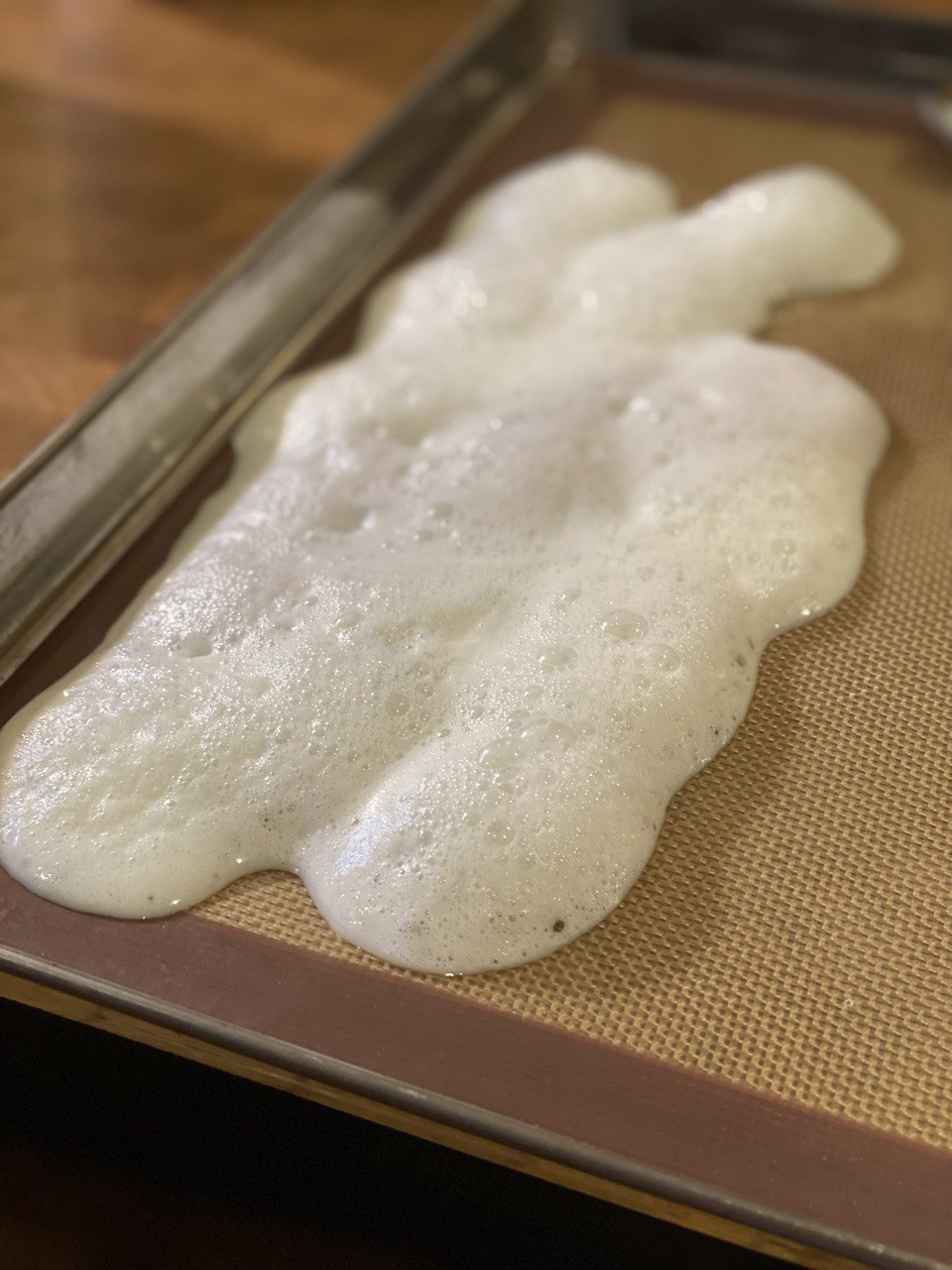
Looks and tastes great though!
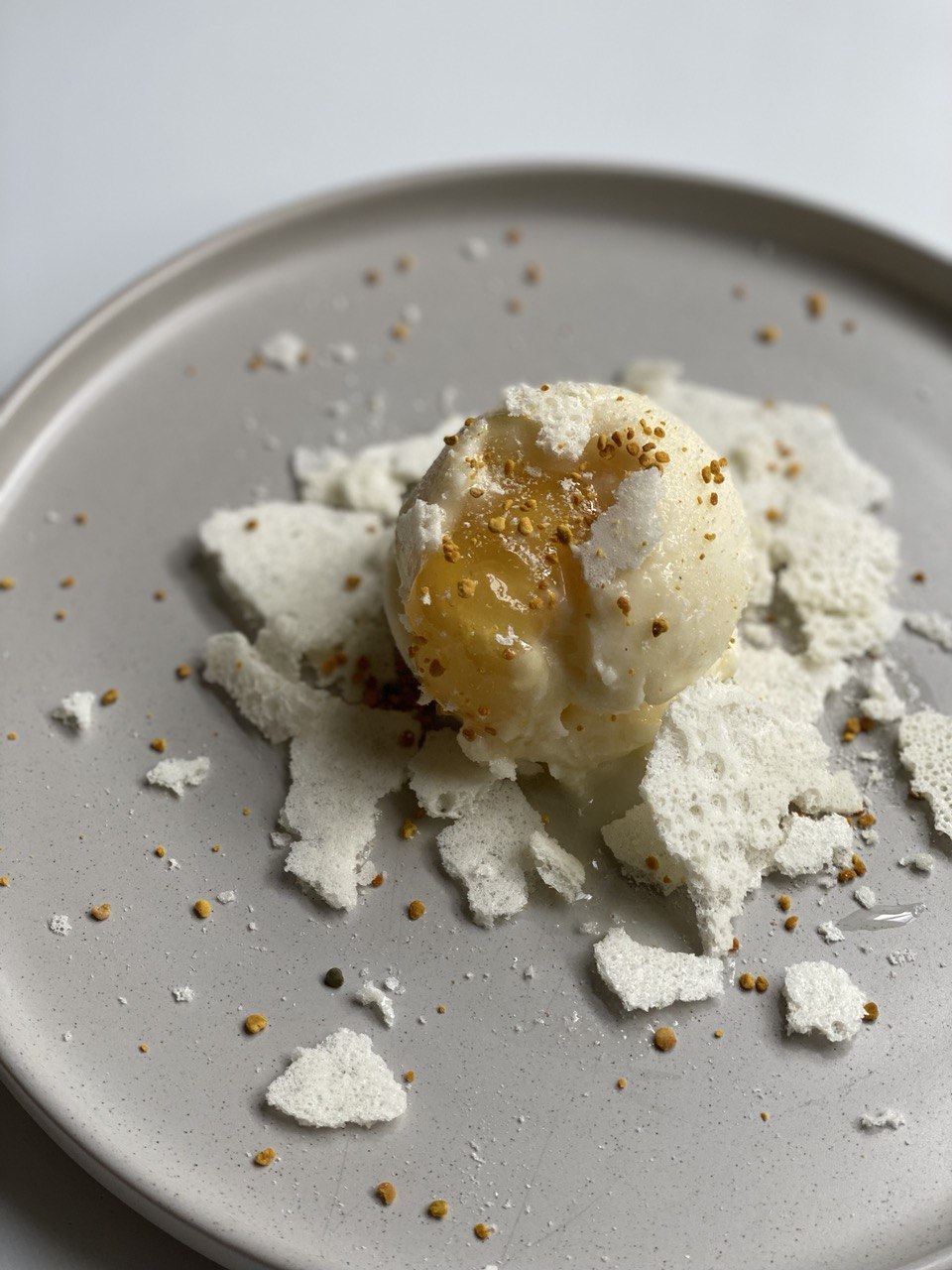
Rhubarb crumble tartlet ¶
My other attempt at desserts making (which I am usually not that fond of) was this fancy crumble from the one and only pub with two Michelin stars. Rhubarb crumbles are very common across the UK, and yet rarely are suitable for fancy dining.
To make it more palatable, rhubarb and apple compote is done in two stages to account for crispy texture:
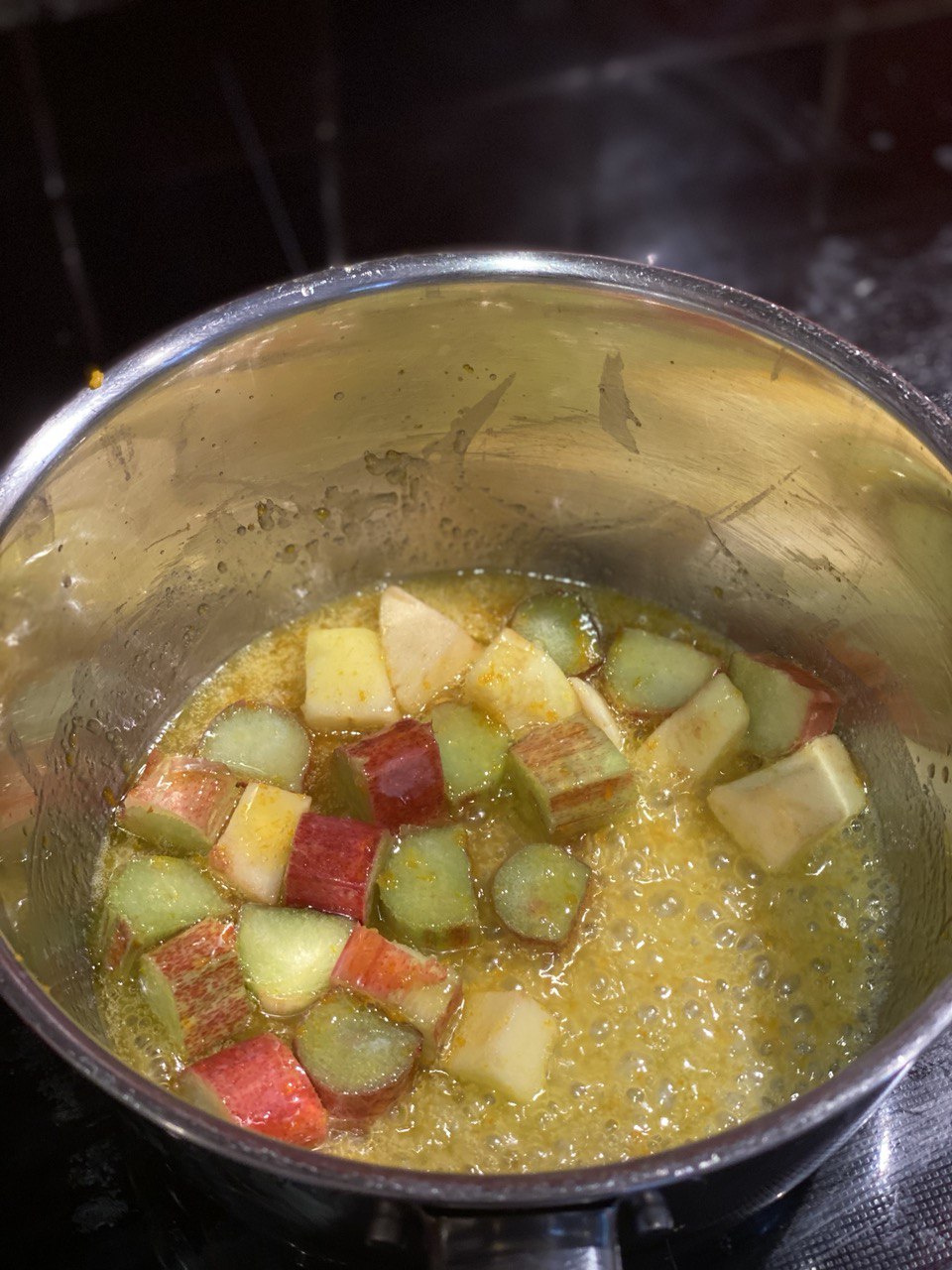
Then it gets encased with a thin layer of sweet almond pastry:
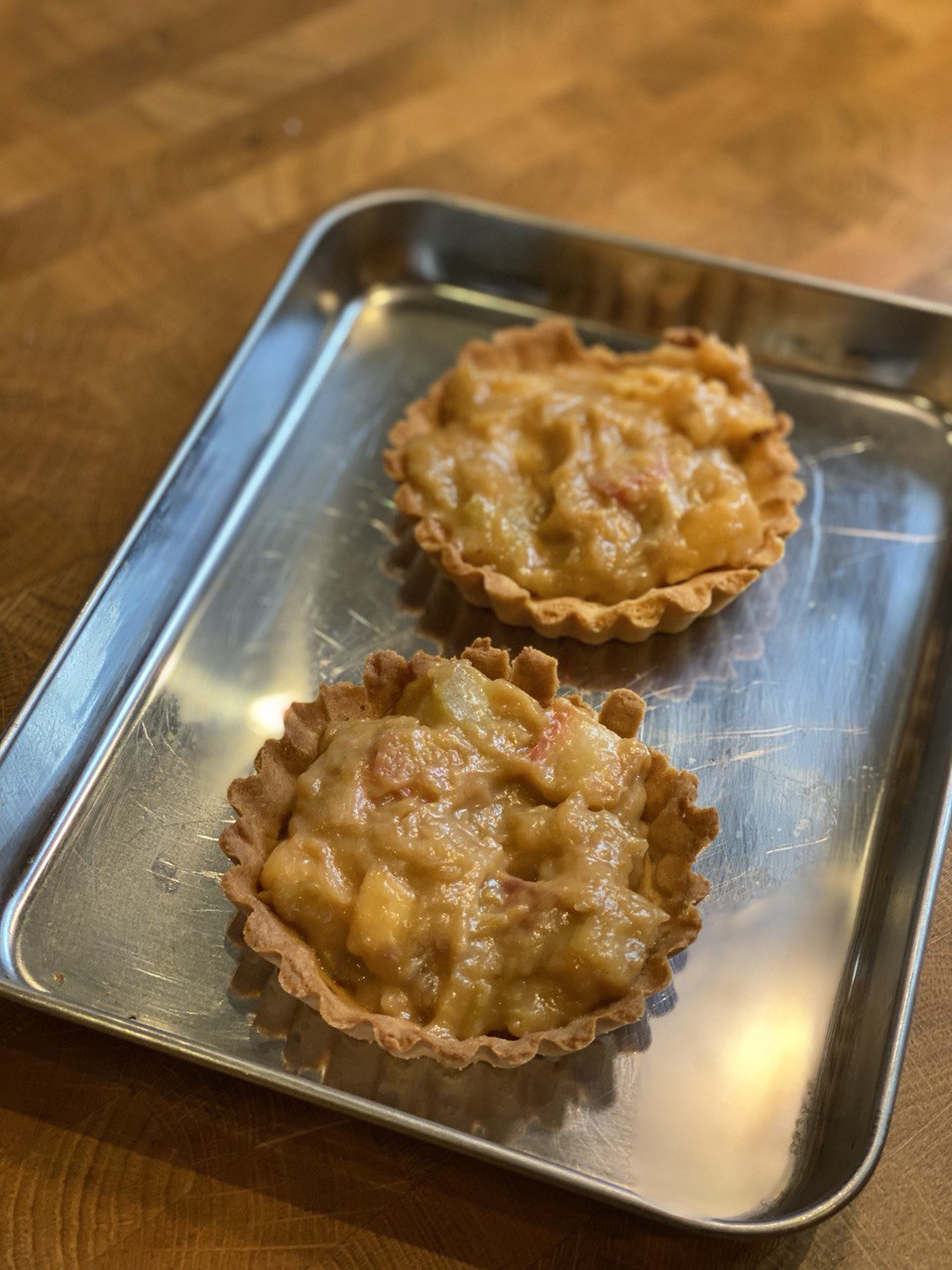
Covered with crumble, heated up, and dusted with icing sugar. To serve I dehydrated orange tuiles and cut them into rectangles:
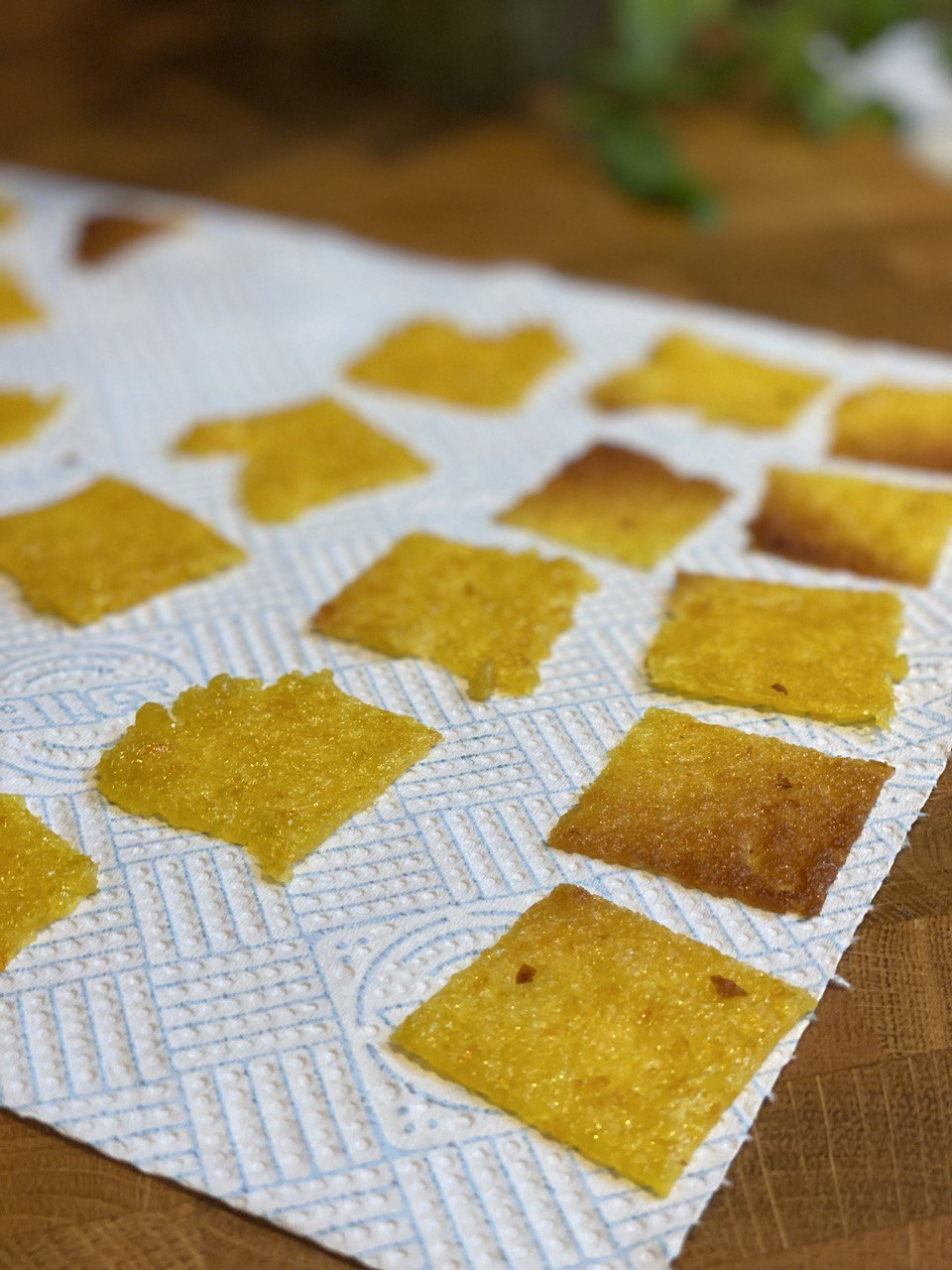
And then made some dry vermouth frozen yogurt. The recipe calls for lemon verbena ice cream, but I didn't have enough fresh lemon verbena, and dry vermouth has a very similar herbal palette while yogurt makes up for the missing sour kick.
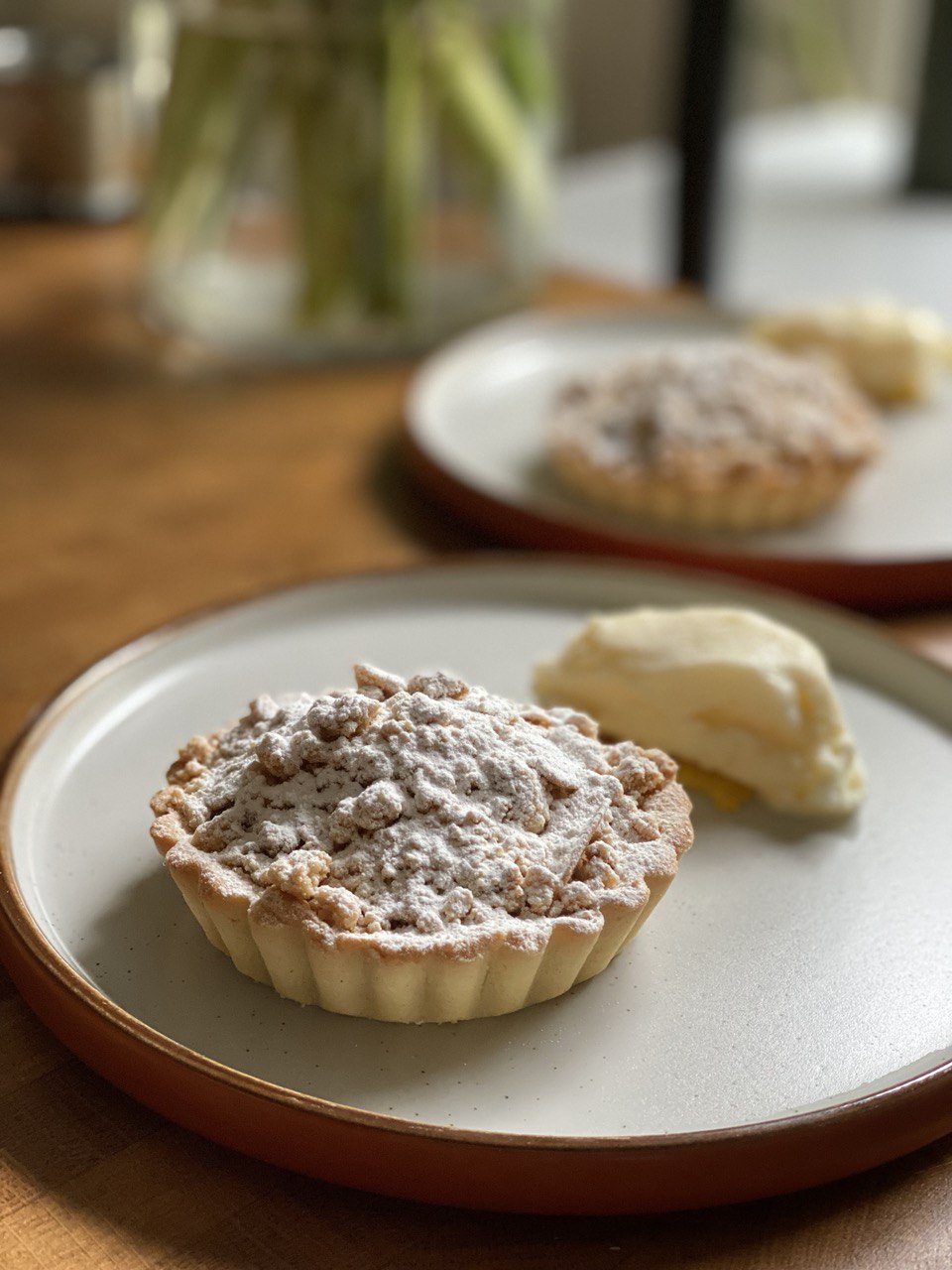
Butternut squash tortellini with sage brown butter ¶
Last but not least, we had friends over and I got a chance to delegate the most troublesome parts of another Daniel Humm's creation, handmade tortellini.
Butternut squash is baked and mixed with mascarpone, honey, and parmegiano reggiano, then wrapped into egg-based dough and boiled for a few minutes.
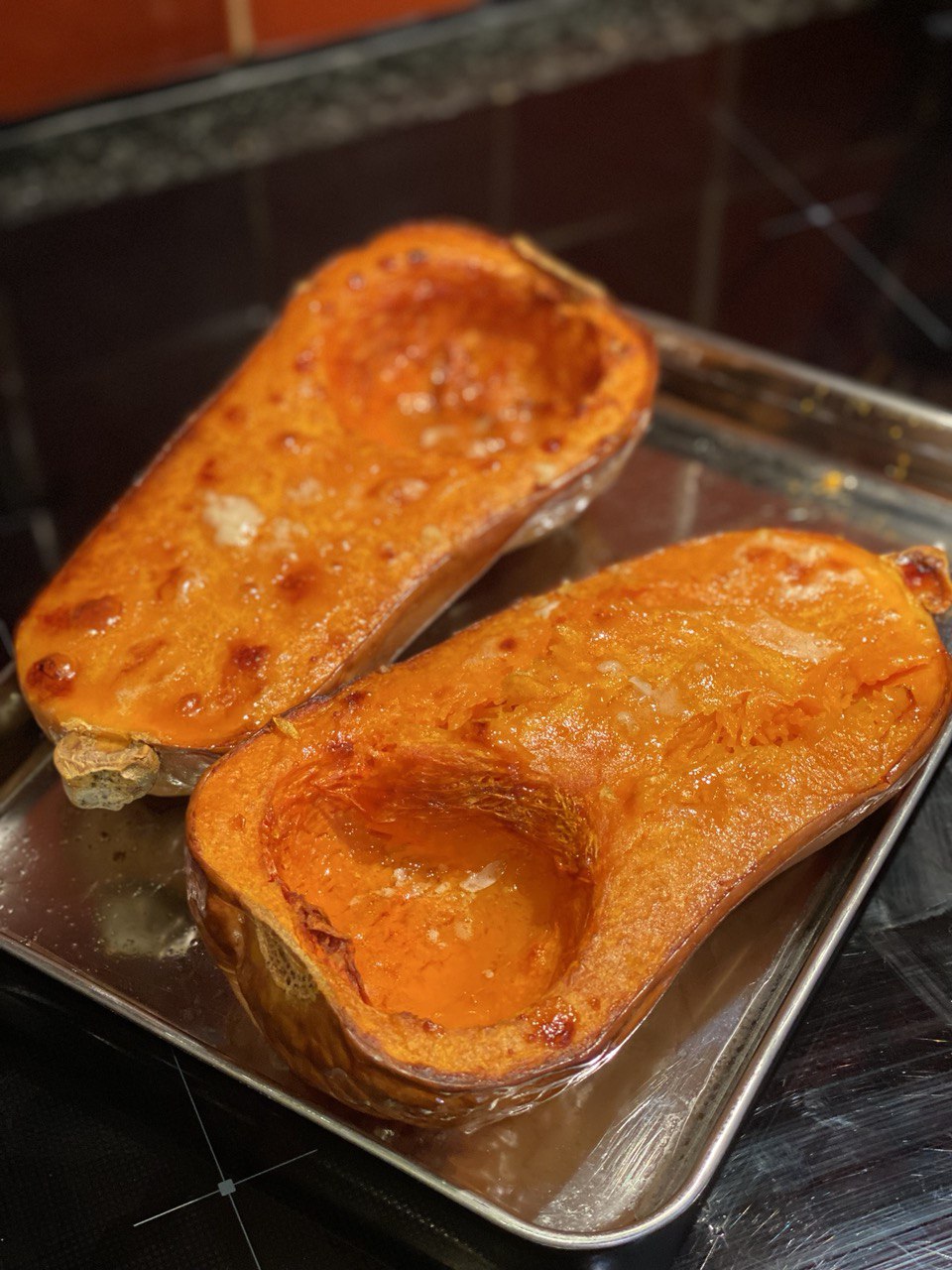
Emulsified with butter, and then plated with brown butter I infused with sage Sasha grows at home.
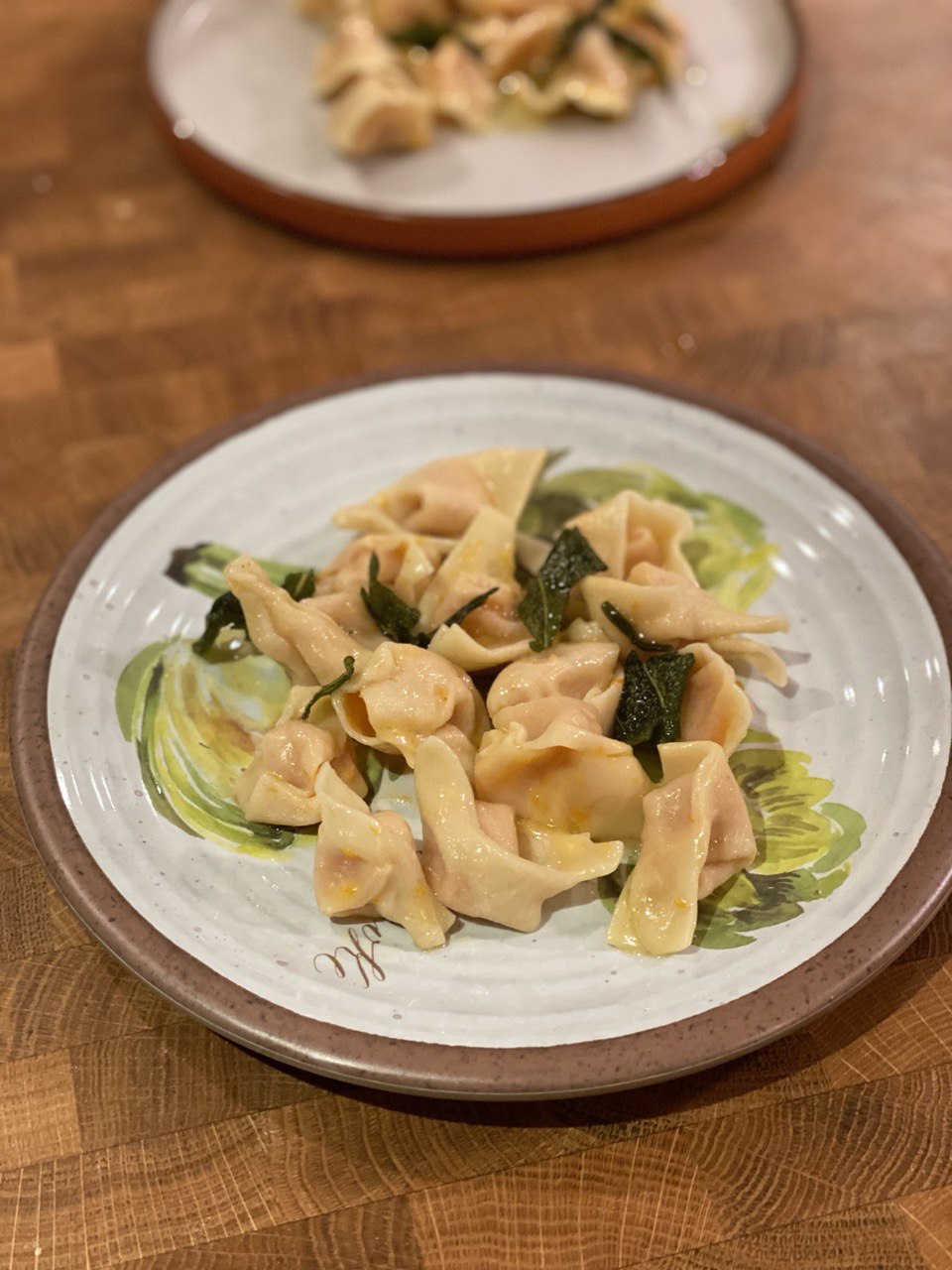
Best things in life are that simple.
Things I enjoyed reading ¶
1. At This Instagram Hot Spot, All the World’s a Stage (and the Buffalo’s a Prop) by Vivian Wang ¶
It might sound quite cliche, but this reminds me of so many episodes of Black Mirror at once (and I watched only three).
Such staged photo shoots have become the specialty of Xiapu County, a peninsula of fishing villages, beaches and lush hills known as one of China’s top viral check-in points. It is a rural Epcot on the East China Sea, a visual factory where amateur photographers churn out photogenic evidence of an experience that they never had — and that their subjects aren’t having either.
That buffalo lumbering through the banyan trees? Hasn’t been used to farm in years. The farmer’s outfit? Better for a museum diorama showing how field workers dressed 100 years ago.
Even the mist wasn’t real mist, but smoke generated by burning straw (out of frame).
On the other hand, I am quite surprised it didn't happen earlier: given how obsessed the world is with all those likes, photos, and reposts, it sounds like a too good of an opportunity to ignore.
Here is another cool idea: a restaurant but with fake food you can make photos of as much as you want without worrying for it to melt or break apart.
2. Maps of Matter by @michael_nielsen ¶
This is an inspiring attempt to map out... well... things. And understand how they work in the meantime.
At least, that's the story we learn in high school chemistry. In fact, oganesson confounds these expectations. Theoretical calculations suggest oganesson is likely to be a solid semiconductor at standard temperature and pressure, not a gas. Furthermore, it may be significantly reactive, unlike the other noble gases.
I skipped most of my school's lessons on physics and chemistry, but reading this for half and hour pretty much closed most of the gaps I was aware of. Highly recommend.
3. Trish Rothgeb coined ‘third wave’ — and is now looking toward coffee’s future by Michael Paul Light ¶
An interview with the lady who came up with the concept of "third wave coffee" and redefined the last two decades of all things beans.
Those that fall below 80 are typically defective in some way, with too many beans showing signs like insect damage or evidence of improper fermentation that affect the flavor of the brewed coffee made from them.
For reference, the decent but boring cups of coffee found in single-use K-cup pods generally fall between 80 and 84 points, while the stuff you find served in local boutique cafes are more likely 85s and up. The stuff that comes with the brewer in your cheap hotel room is sub-80.
Not many insights but quite a refreshing read about challenges the industry is still facing.
4. What if an AI won the Nobel prize for medicine? ¶
What'd happen if we could create a yet-another-AI but then make it work in medtech?
Not much, but enough to imagine a world where machine learning tools don't pretend to invent but good enough to produce.
Even so, the Nobel committee’s reference to yulya’s “discovery” has angered those who see it as little more than a clever tool. “yulya is an ai capable of winning a Nobel. That is not the same thing as an ai that’s capable of discovery,” says Hars Kritik of the European Robotics Institute in Prague. He argues that even the best ais are only useful in specialised areas like drug design, where large quantities of data are married to well-defined metrics of success. Saying that they can make discoveries, he says, waving a placard outside the concert hall, is “flawed anthropomorphism”.
Despite being a short (almost) sci-fi story, this is actually a very important message: no matter how smart are the tools we create, they probably won't be able to become smarter than the creators. But they can easily become more performant, or more precise, or more successful.
And take our jobs.
5. Welcome to the Golden Age of Masa by @theglutster ¶
For those not familiar with nixtamalized masa, it definitely is an acquired taste, and requires cooking grains in limewater or some other alkaline solution.
The difference in flavor between true nixtamalized masa made from heirloom organic corn versus Maseca-based tortillas made from conventional corn is like swapping supermarket white bread for a hot loaf of whole grain sourdough. The aroma, flavor, and even texture is incomparable. If you want to understand why, you can: Transparent sourcing is a keystone of this golden age.
It took me quite a few time and starting making masa at home to properly appreciate the flavour of homemade corn tortillas, but even then I didn't manage to convert that many people to our side.
Hopefully it will change though, you folks are really missing out!
6. Engineers: You Can Disrupt Climate Change by David Fork and Ross Koningstein ¶
I mentioned our duty as engineers to make the world a better place quite a few time, but this is probably one of the most detailed collections of ideas (and motivation) to date:
Global-scale climate preservation is an idea that engineers should love, because it opens up new fields and career opportunities. Earth’s climate has run open loop for over 4 billion years; we are lucky that our planet’s wildly fluctuating climate was unusually stable over the 10,000 years that modern civilization arose and flourished. We believe that humankind will soon start wrapping a control loop around earth’s climate, designing and introducing controlled changes that preserve the climate.
And comparing to many other attempts to delegate the burden of solving it to engineers, here authors actually avoid that.
7. This Simple Test Reveals if Your Mental Images Are More Vivid Than Other People's by Reshanne Reeder ¶
A somewhat misleading title but a great research on how to explore one's mental images through a simple blinking test not recommended for people with photosensitive epilepsy.
In less than ten minutes, it creates altered states of consciousness, with no lasting effects for the brain. Visual experiences set in almost as soon as you start looking at it.
But our new study, published in Cortex, shows that while some people see castles or fractals in the Ganzflicker, others see nothing. We have come up with a theory of where those individual differences come from.
I patiently waited for ten minutes and didn't get much, but the research is quite nice to read anyway (also I might have had very high expectations).
8. We Moderns Are Status-Drunk by Robin Hanson ¶
One more way to explain our motives as the mankind.
However, for the first time in history the industrial revolution enabled income/wealth to grow faster than did human population, inducing a rapid increase in average income/wealth, an increase that has been continuing for several centuries now. As a result, our status detection systems have severely misfired. They tell us each that, because we are rich, we have high relative status. And the richer we have become, the more severe has been this error.
The metaphore here is quite strong and I like that: status to modern people is akin water to our predecessors, and while we learn to distinguish drinkable water from poisoned, we still can have not enough or too much of it.
9. Doing old things better vs doing brand new things by @cdixon ¶
A nice summary of two paths anyone could take, whether it is to launch a business or to shape one's personal development: do something better or do something new.
The most common mistake people make when evaluating new technologies is to focus too much on the “doing old things better” category. For example, when evaluating the potential of blockchains, people sometimes focus on things like cheaper and faster global payments, which are important and necessary but only the beginning. What’s even more exciting are the new things you simply couldn’t create before, like internet services that are owned and operated by their users instead of by companies.
That also captures well the career progression for many: you could either keep delving into deep waters of your primary technology and become irreplaceble (or obsolete if the technology dies off), or keep exploring other field without taking too much time in each of them.
I always think of it as a game where you need to maintain the main skillset but also take side-quests. Create iOS apps and then cook Michelin-inspired dishes, for example, or manage people in your spare time.
10. Building telemetry for tea aka Tealemetry by @benjojo12 ¶
A DIY weekend project for those sad that tea gets cold (and ruined).
Some people think that drinking tea at 30c or room temperature is acceptable, I think those people are incorrect. However after missing the acceptable temperature window too many times I decided I need a way to be alerted when the tea is drinkable.
I don't drink tea but would pay for the opposite: something that notifies when a cocktail becomes too warm to drink and should be cooled down again.
Things I didn't know last Tuesday ¶
1. Ladybug larvae ¶
Ladybugs eat aphids, which is a known fact.
There is a less known fact, that ladybug larvae eat way more aphids:
Ladybug larvae look somewhat like tiny alligators, with elongated bodies and bumpy exoskeletons. In many species, the ladybug larvae are black with brightly colored spots or bands.
In the larval stage, ladybugs feed voraciously. In the two weeks it takes to become fully grown, a single larva can consume 350 to 400 aphids.
And even less known fact I believe is how those larvae look like:

For those really curious about ladybug's lifecycle, here is a cool quick video on all four stages of their development.
2. 86 (term) ¶
An example of the hospitality industry slang, where no one even remembers where does the term come from:
Eighty-six or 86 is American English slang used to indicate that an item is no longer available, traditionally from a food or drinks establishment; or referring to a person or people who are not welcome in the premises.
I've seen it being used a few times when referring to refusing to serve someone, but didn't know about also definiting an unavailable menu item.
3. Sunshower ¶
When it's pouring cats and dogs, but the sun is shining, the less creative English speaking folks came up with the word "sunshower".
A sunshower or sun shower is a meteorological phenomenon in which rain falls while the sun is shining.

In Russia it is called "mushroom rain" (based on the assumption that mushrooms grow way better after such rains).
My favourites are Hawaiian "liquid sunshine" and Polish "witch is making butter", but other countries have funny versions too, check out the link for more.
4. American men lose friends faster than women ¶
Some grim statistics on how social media is making everyone (but mostly men) more lonly.
Just 15 percent of men consider themselves as having 10 or more close friends, a steep drop from the 40 percent of men who reported such bromances in 1990.
I probably don't make it to these 15 percent either (but that might just mean there is a difference between real-life close friends and the "Close Friends" list on Instagram).
5. Military chocolate ¶
I've learnt two things simultaneously here: military chocolate tastes terrible on purpose to make people save it for emergencies and not it straightway, and also it is heat-resistant.
When provided as an emergency field ration, military chocolate was very different from normal bars. Since its intended use was as an emergency food source, it was formulated so that it would not be a tempting treat that troops might consume before they needed it.
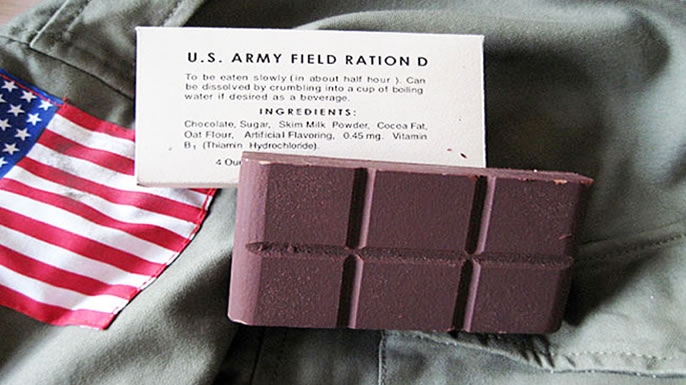
6. Some banknotes' size correspond to their value ¶
Here is a nice accessibility feature, used for example in Australian:
The first thing which helps people with a visual impairment tell banknotes apart is that as the value gets smaller, so does its height and width.

I often was annoyed by different banknote sizes (at least back then when I actually had them in a wallet), but never though why would someone do that intentionally.
7. Lollipop lady ¶
Apparently there is a dedicated person to stop traffic on pedestrian crossings if needed.
Crossing guards are known by a variety of names, the most widely used in the United Kingdom, Ireland and Australia being "lollipop lady/man", a reference to the large signs used that resemble lollipops.

8. Duenos inscription ¶
A beautiful example of old-school craftmanship; also would make a fancy vessel for some three components cocktail.
The Duenos inscription is one of the earliest known Old Latin texts, variously dated from the 7th to the 5th century BC. It is inscribed on the sides of a kernos, in this case a trio of small globular vases adjoined by three clay struts.

I will leave the riddle of relationships between the Old Latin "duenos" and Latin "bonus" for curious subscribers to solve.
9. People are more likely to get hired if they wear glasses to the interview ¶
Unless you apply for a military pilot, that's it.
According to the study by the College of Optometrists, about 33% of adults think people who wear glasses look more professional, while 43% believe that they look smarter. Now, you might think that a single study isn’t enough evidence to clearly demonstrate that wearing glasses can help you improve the way you present yourself to others, but there are multiple studies that support this notion. Several studies have shown that people who wear glasses are typically perceived as more intelligent, more competent, and more industrious than those without spectacles.
Probably that's an argument against doing a surgery then? I am very tempted.
10. Sonoluminescence ¶
Think of it as the emission of short bursts of light from imploding bubbles in a liquid when excited by sound. As an example, it is used as a weapon by pistol shrimps:
As it extends out from the claw, the bubble reaches speeds of 60 miles per hour (97 km/h) and releases a sound reaching 218 decibels. The pressure is strong enough to kill small fish.

Book of the week ¶
One of the signature British sweets is After Eights, mint chocolate confectionary.
In late 60s a chemist turned inventor of liqueurs came up with a liquid form of those sweets, and it quickly became tremendously popular.
So popular, people are still hunting for leftover bottles of Peter Hallgarten Royal Mint-Chocolate Liqueur on auctions, or share stories of their 50p shots in the Union Bar circa 1980s.
Sasha brought me one of the original copies of Peter's book Liqueurs (1967!) and while he shares dozens of recipes the mint liqueurs section is rather small -- most likely on purpose.
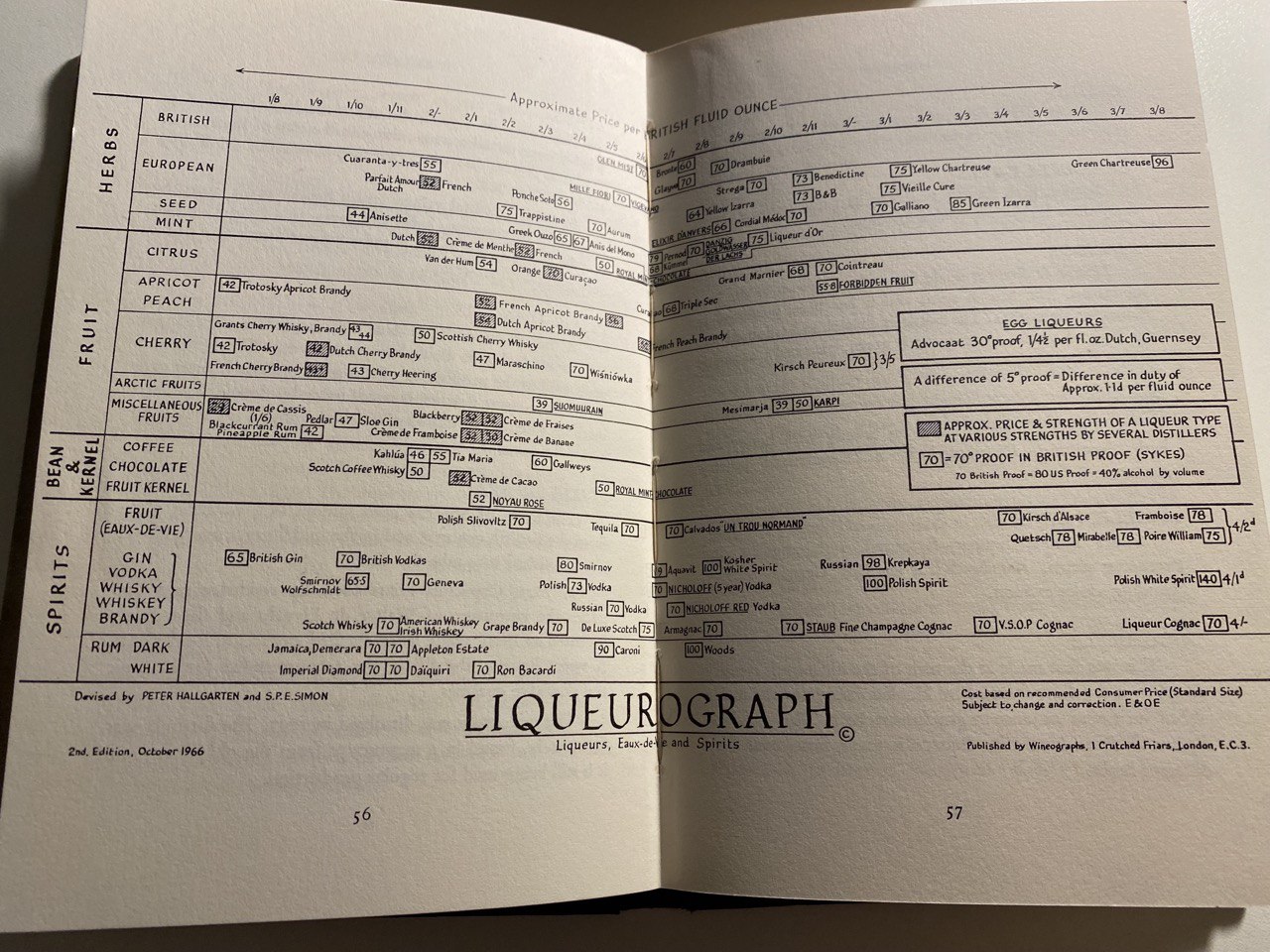
Lots of other priceless knowledge though!
The movement of kümmel distillation from West to East Europe is referred to the visit of PEter the Great of Russia, who visited Amsterdam in 1696. Being anxious to establish a Russian Navy, he decided to learn shipbuilding at first hand and worked as a labourer, keeping his identity secret. During his eighteen month stay, he visited the Bols distillery and thus it is believed that he brought kümmel to Russia. Production did not, in fact, commence until the early part of the nineteenth century with manufacture at the Allash distillery.
This is actually quite surprising. Back then, kümmel was the rival of gin (think gin made with caraway seeds instead of juniper) and had a calmative effect, like a digestive.
But the only Russian manufacture got burned down during the early ears of the revolution, and got reopened in France instead.
Tough life.
Thank you and see you in a week! ¶
If you have any questions, or want to suggest a link for the next newsletter, please drop me a message on Twitter or reply to this email.
Cheers! 🍸